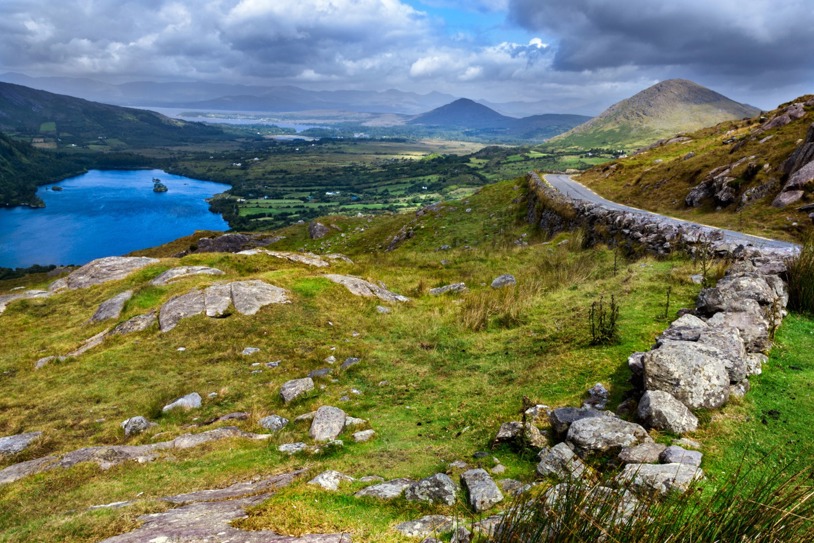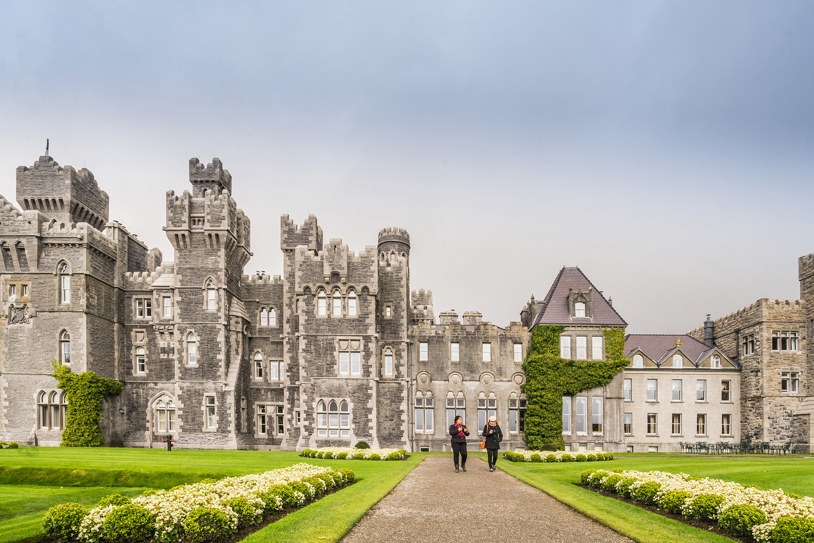The 800-year-old castle is truly remarkable, a grand, historic structure with national significance. The warm Irish hospitality fills your stay with fine dining and a wealth of activities at your doorstep.
Ashford Castle & Ireland's
Oldest School of Falconry
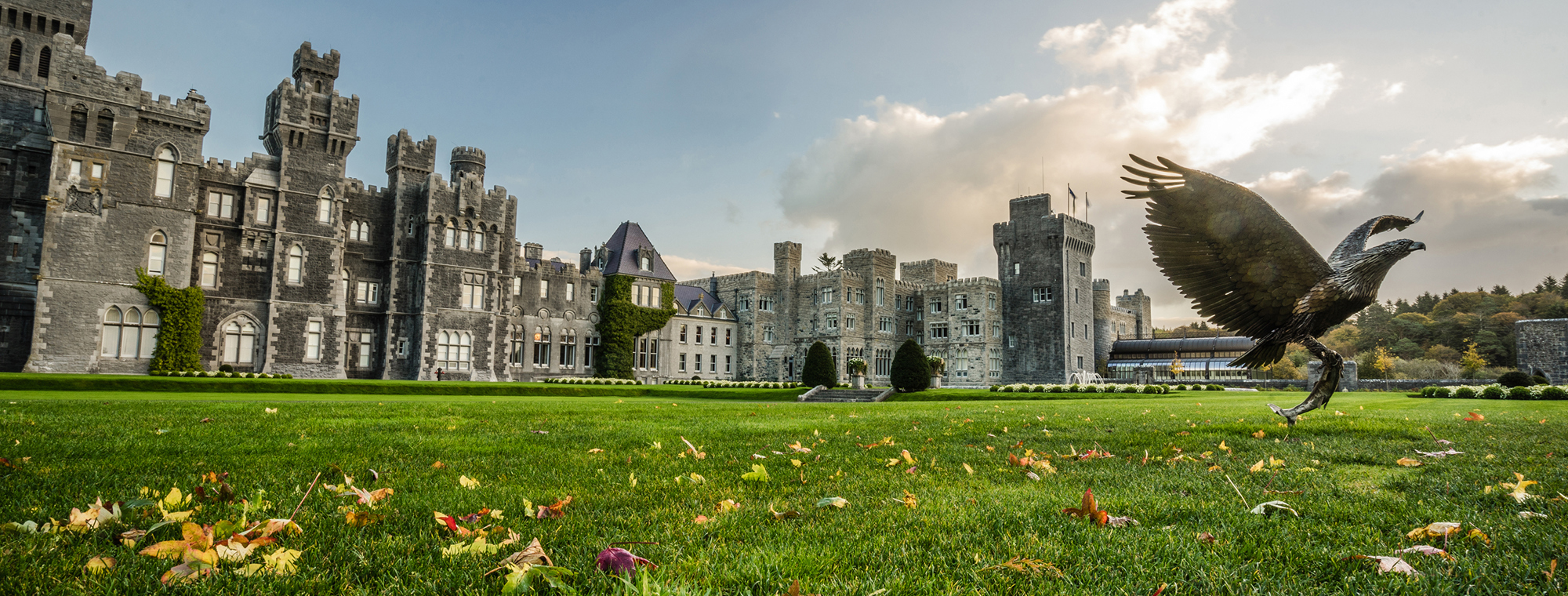
Ashford Castle: 800 Years of Hospitality
This 800-year-old castle is truly remarkable, a grand, historic structure with national significance. The former home of the Guinness family, it has hosted countless notables over the years, including The Prince of Wales (who later became King George V) and President Ronald Reagan. Red Carnation’s impeccable five-year restoration, drawing on local experts and artisans, reaffirmed Ashford Castle’s status as one of the most prestigious hotels in Europe – a true celebration of past, present, and future. Unrivaled service, warm Irish hospitality, and five-star luxury await at Ashford Castle, part of The Red Carnation Hotel Collection. Situated in a spectacular 350-acre estate, discover sumptuous rooms and suites, splendid interiors brimming with antique furniture, fine fabrics, and unique features at every turn.
A Brief History of Ashford Castle
Ashford Castle’s rich history dates back to 1228 when it was built by the Anglo-Norman House of Burke (sometimes noted as Bourke or even Burgo). Though the family would build several castles throughout Ireland, Ashford would serve as their primary residence for more than 300 years. The castle eventually fell in the 15th century to the Bingham house during a battle. It was this family who, over the next several generations, would fortify it and add interior enclaves.
The castle got its first taste as a lodge in the 1600s when the Browne family turned it into a hunting lodge. Today the pair of eagles representing the Browne coat of arms is still visible on the roof of the Castle.
Ashford Castle & the Guinness Family
It eventually passed between several different proprietors over the years, until it was acquired by the famed Guinness family. Under the ownership of Sir Benjamin Lee Guinness — who purchased the property in 1852 — Ashford Castle was extended to include several Victorian-style additions as well as more than 20,000 acres of land.
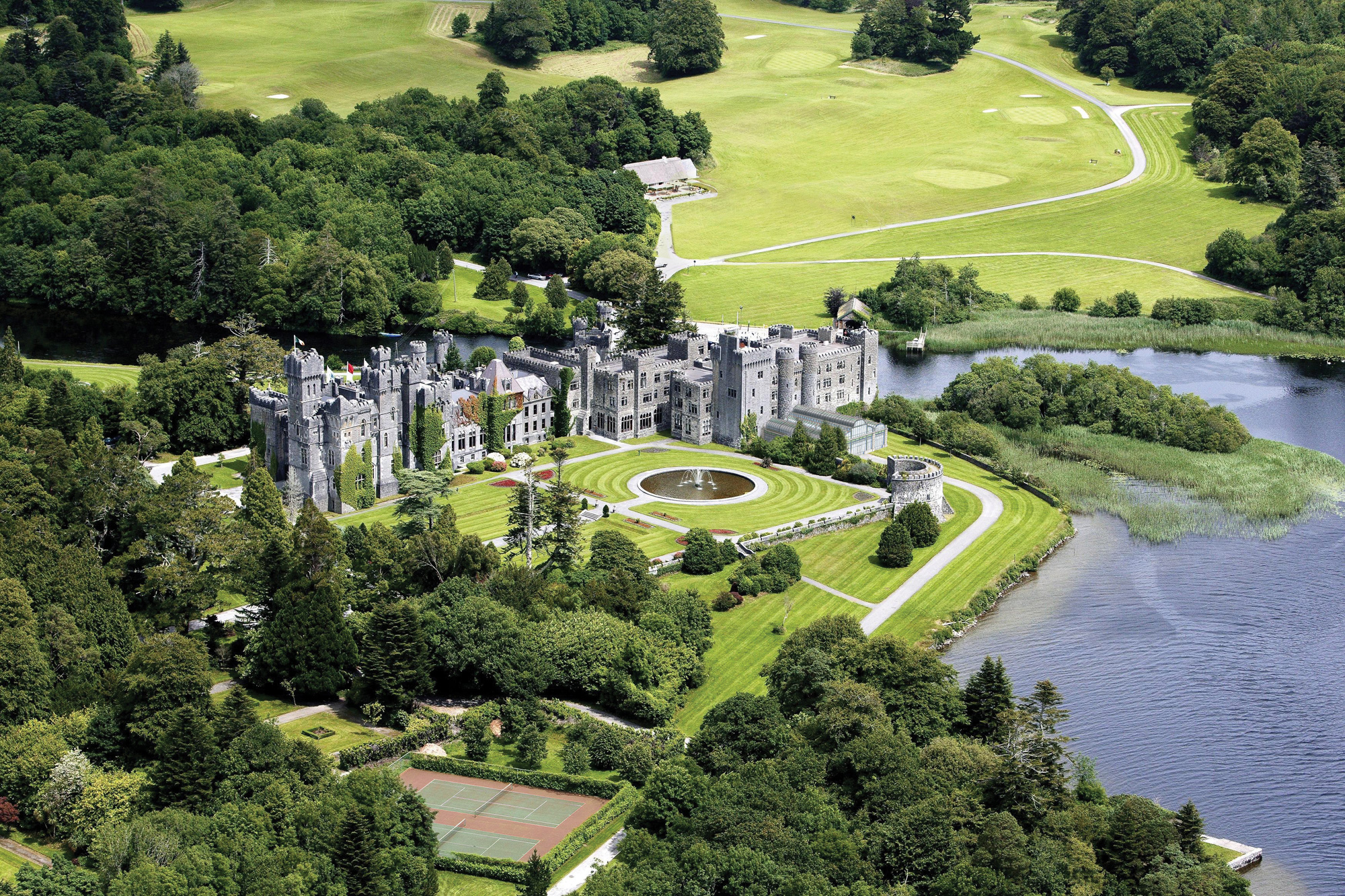
The castle remained in the Guinness family until 1939 when it was ultimately sold to the Huggard family. At this phase of the castle’s history, it becomes, for the first time, a top-rated, first-class hotel. While continuing on as a sought-out hotel, the property also began to gain notoriety in pop culture.
Ashford Castle & The Quiet Man
In 1951 director John Ford sought out and used the castle in his movie, “The Quiet Man.” Over the years many more film and television makers would go on to use the castle as a backdrop for their period stories. Most recently the castle is used as French Court in the CW drama “Reign.”
In the 1970s the castle expanded again, once again doubling in size under the new ownership of John Mulcahy. He also renovated the property, updated the gardens, and added a golf course. In the years following, the castle became a top destination, often named on many “Best Of” lists.
Red Carnation Restoration of Ashford Castle
Operated as a hotel for more than a century, the castle came into The Red Carnation Hotel Collection in 2013. A two-year, $75 million renovation program, headed by architect Philippe Bonino and Red Carnation Hotels founder and president Beatrice Tollman. During this time, the renovations included the addition of a private, 30-seat theater inside of the castle and a cigar terrace. The Ashford added a state-of-the-art spa and wine tunnels in 2015. Tollman and Red Carnation not only restored the 13th-century castle but reaffirmed its status as one of the best hotels in Europe.
Visiting and Staying at Ashford Castle
The castle is still frequented by important figures from around the world including presidents and royalty. Of course, all guests of Ashford Castle feel like royalty with world-class accommodations, an array of noble activities to choose from, and the world-renown superb dining experiences.
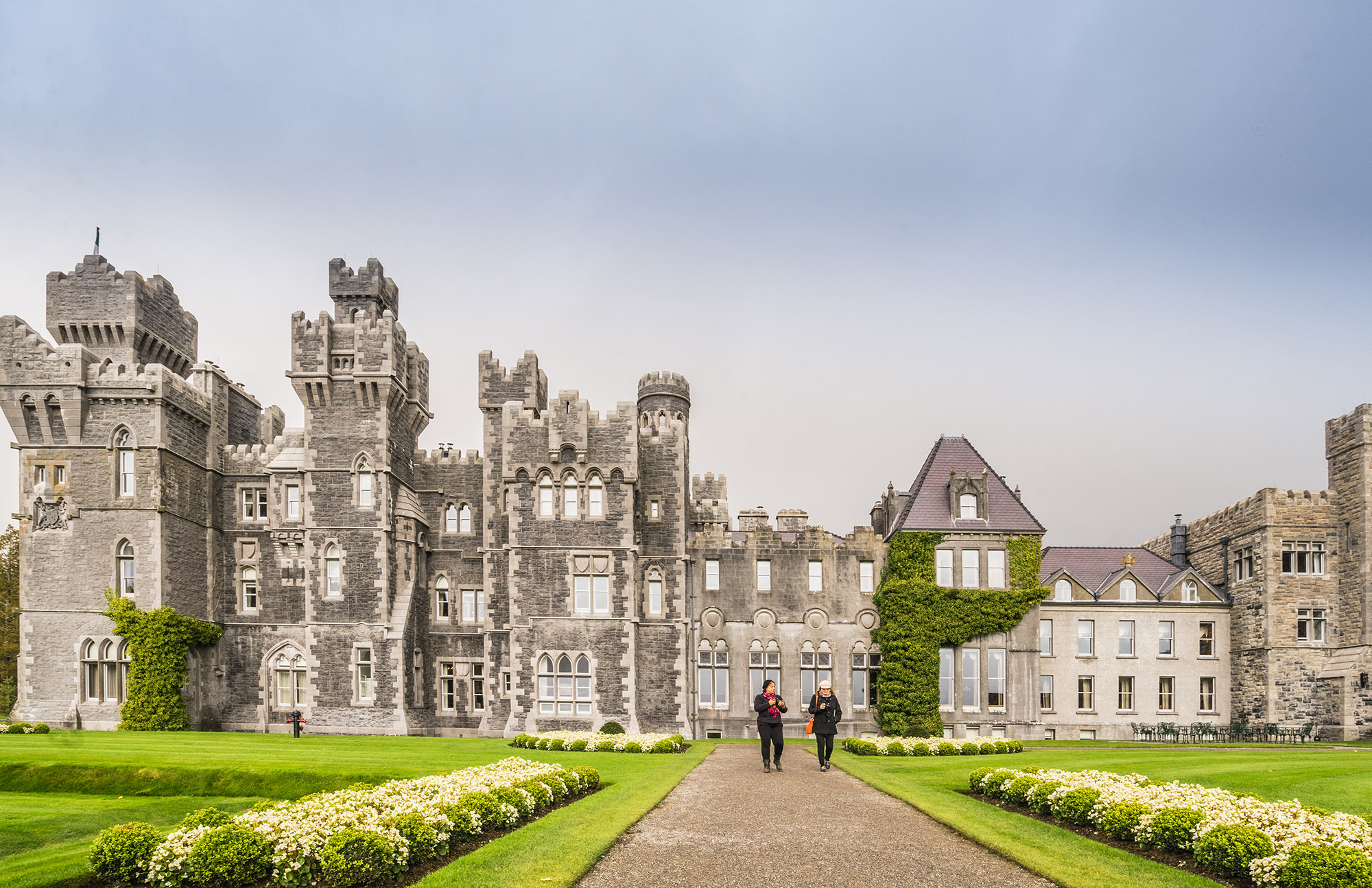
Ashford Castle was recently awarded as a Forbes five-star hotel, the only hotel to achieve such a status in Ireland. The property has also won countless other awards that pay testament to the remarkable effort in creating unforgettable experiences. Guests can stroll the magnificent Castle grounds with two Irish wolfhounds, meet the falcons and learn a bit of history, go horseback riding, practice archery, play tennis, or visit Mrs. Tea’s Boutique and Bakery, the castle’s exclusive boutique shop. It’s filled with gift items from local artisan suppliers, luxury Irish products, and freshly baked Irish treats.
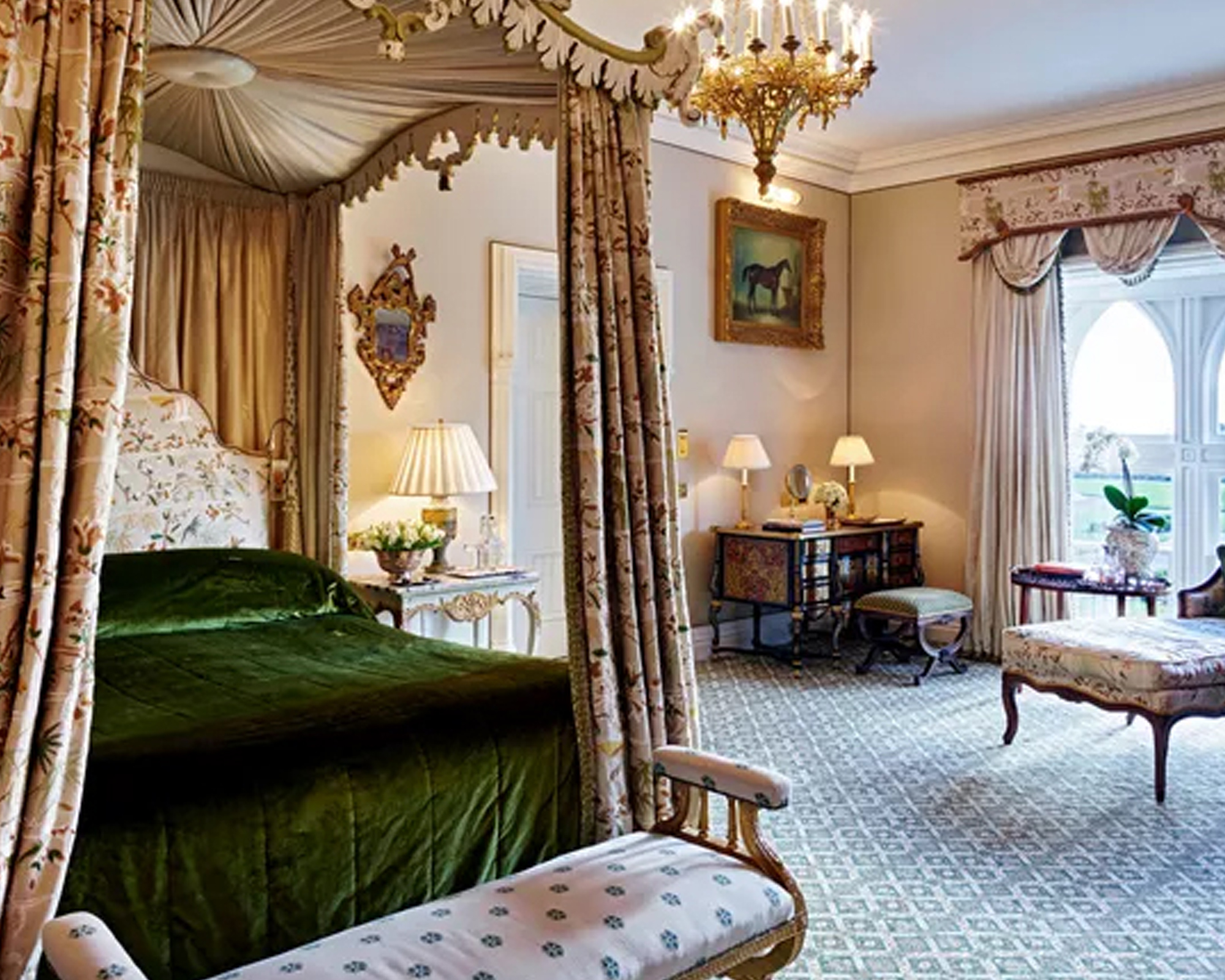
Rooms & Suites at Ashford Castle
Each of the 83 rooms, suites, and Hideaway Cottage at Ashford Castle represent traditional elegance and finesse. Following extensive refurbishment, many of the rooms and suites have been individually and lovingly designed, combining the castle’s original features with the latest modern luxuries.
Meticulous attention to detail can be found in the unique works of art, sumptuous fabrics with custom-designed carpets, bespoke beds, and Egyptian Cotton bed linen. Rare, hand-chosen antiques complement silk-lined walls, curated artworks, and silk curtains that frame the views of verdant grounds and the lake beyond. The elegant suites are masterpieces, named after some of the castle's most famous past guests, from Senator Kennedy to President Reagan, and each suite enjoys breathtaking views of the River Cong or Lough Corrib.
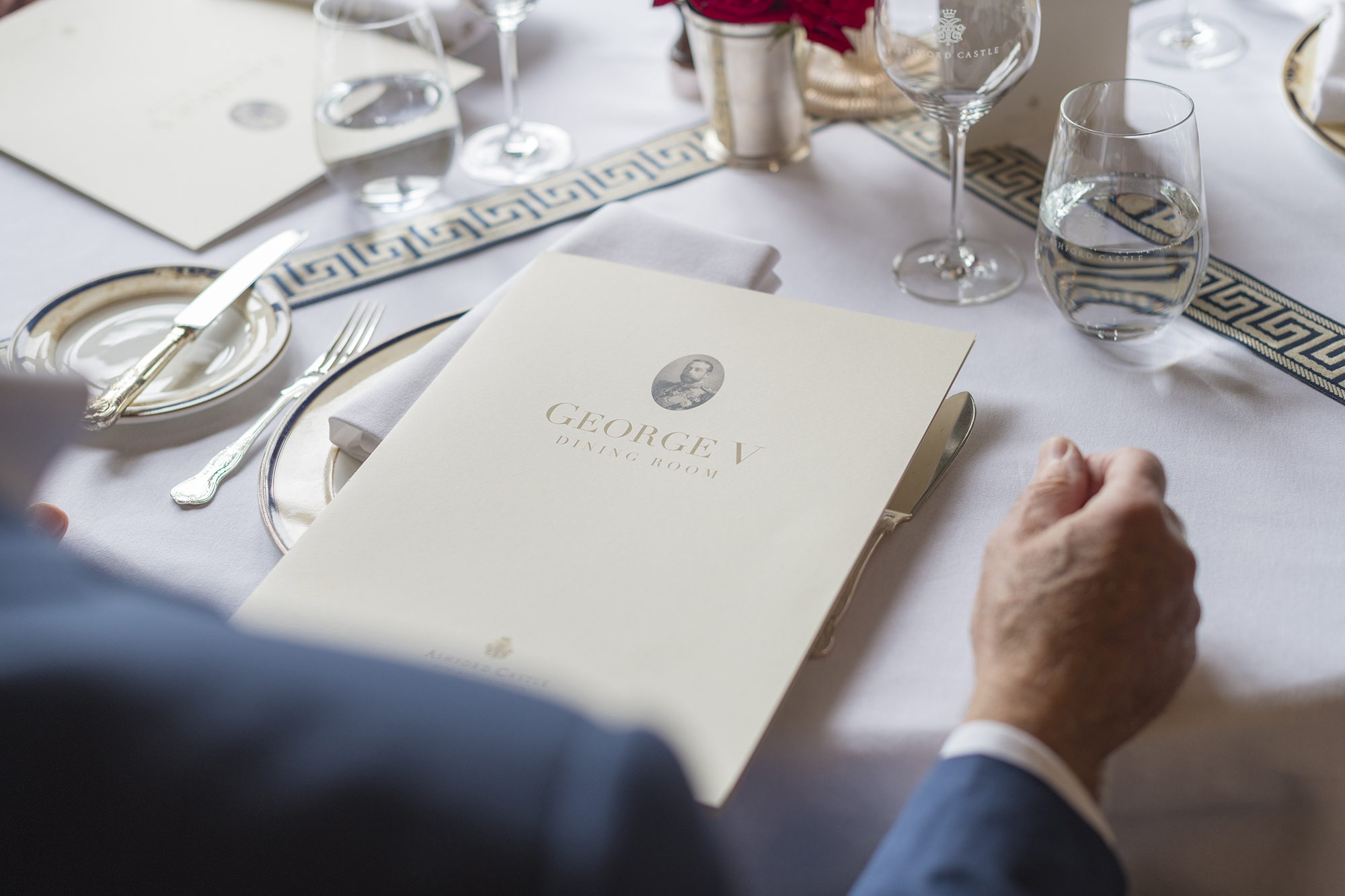
Dining at Ashford
Ashford Castle is as celebrated for its gastronomy almost as much as its history, as only the best in both traditional and adventurous Irish cuisines are served. The castle offers four dining rooms, each with its own personality. From the grandeur of the George V dining room to the casual elegance at Cullens, there is something for everyone- including the option to dine at “Dungeons!”
The Dining Rooms at Ashford Castle
The finest of cuisine is offered in the George V Dining Room, aptly named for a former guest, the dining room features live piano music and superb culinary delights. Of course, it’s important to have a traditional afternoon tea, served daily in the Connaught Room. Your tea is served with an assortment of wildflower accented cupcakes, scones, and finger sandwiches. Apart from the food, guests also rave about the celebrated and extensive wine cellars. The resort serves wine to your heart’s content in the dining rooms, but also offers cellar wine tastings to enthusiasts.
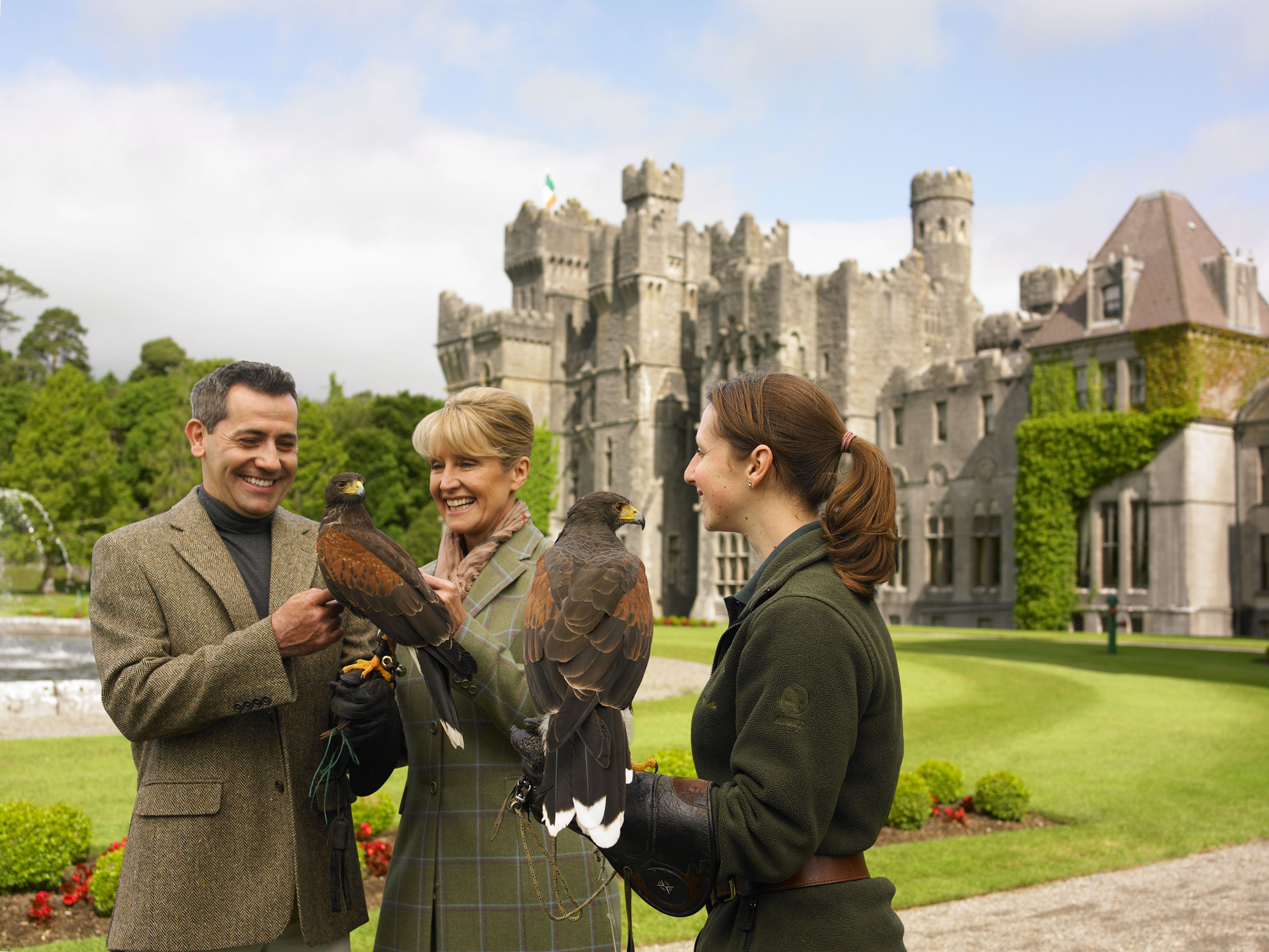
Falconry at Ashford Castle
What is Falconry?
Falconry is the practice of using birds of prey — known as raptors — to hunt small prey, such as rabbits. The birds are highly trained and obedient, requiring intense devotion and care from the falconer. Raptors that are commonly used for falconry include red tail hawks, kestrels, peregrine falcons, and golden eagles. The practice dates back thousands of years, and falconry remains popular today, playing an integral role in conservation efforts.
Ireland’s School of Falconry at Ashford Castle
The oldest established Falconry School in Ireland
Discover the ancient form of falconry at the oldest established Falconry School in Ireland. The Falconry School at Ashford Castle aims to share with you the pleasure and excitement of falconry, a fascination that has enthralled people for 4,000 years, and today provides guests with a unique experience in magnificent surroundings.
Falconry Experiences at Ashford Castle
As Ireland’s School of Falconry is housed on castle grounds, guests of the castle have the chance to fly a Harris hawk. Flying a hawk is an experience of a lifetime! No one ever forgets the moment when their hawk first swoops down from a tree to land on their gloved fist. The signature falconry experience at Ashford is the private “Hawk Walk.”
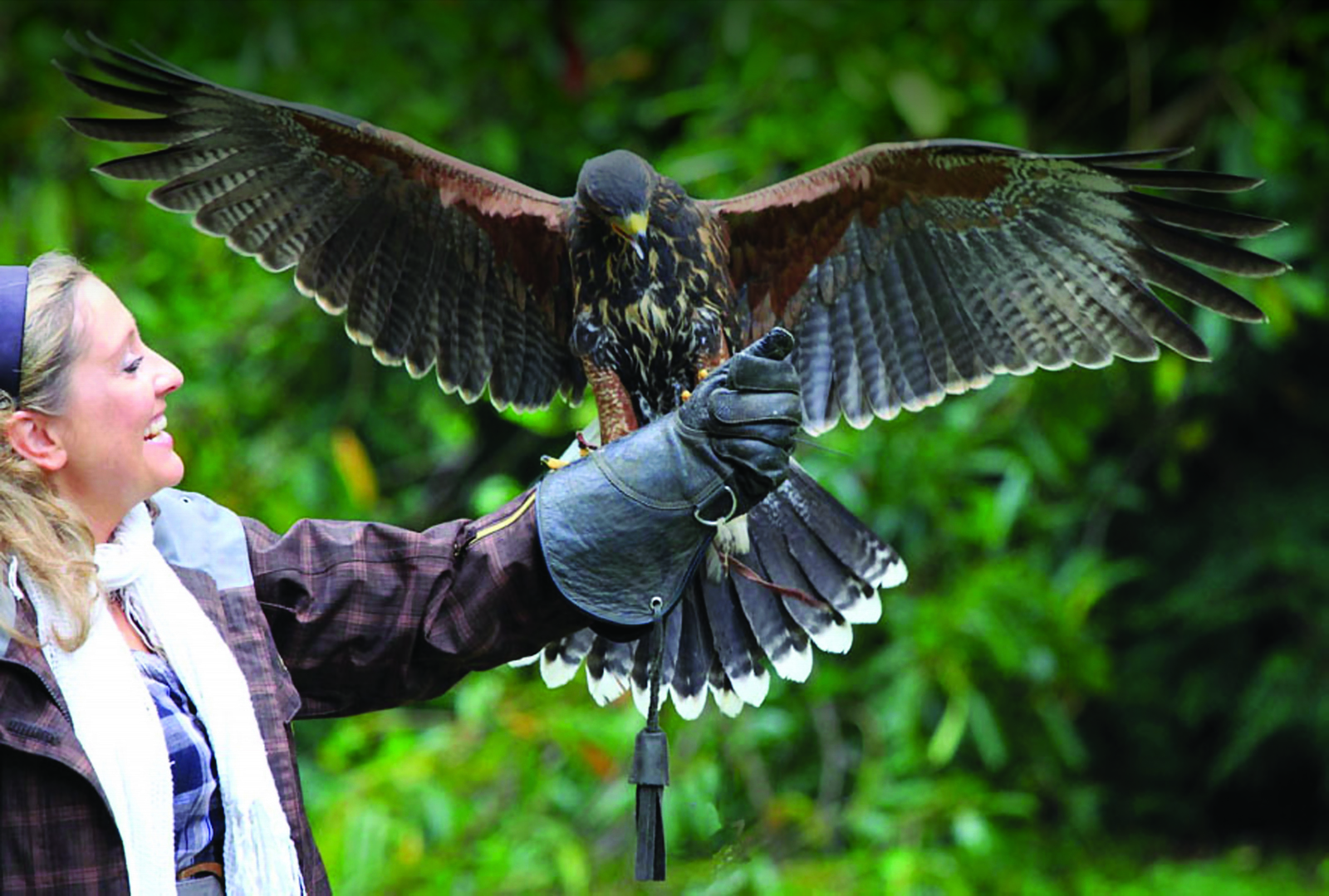
The Halk Walk gives guests the option to fly a Harris hawk around the castle's spectacular grounds, gardens, and woodlands within moments of arriving. The best part? Since the tours are one-on-one, the experience can be catered to everyone on a personalized level. This means an experienced falconer can explore new techniques, while first-timers or children can have a completely different experience. Even better yet- spectators are never charged to watch the hawks fly!
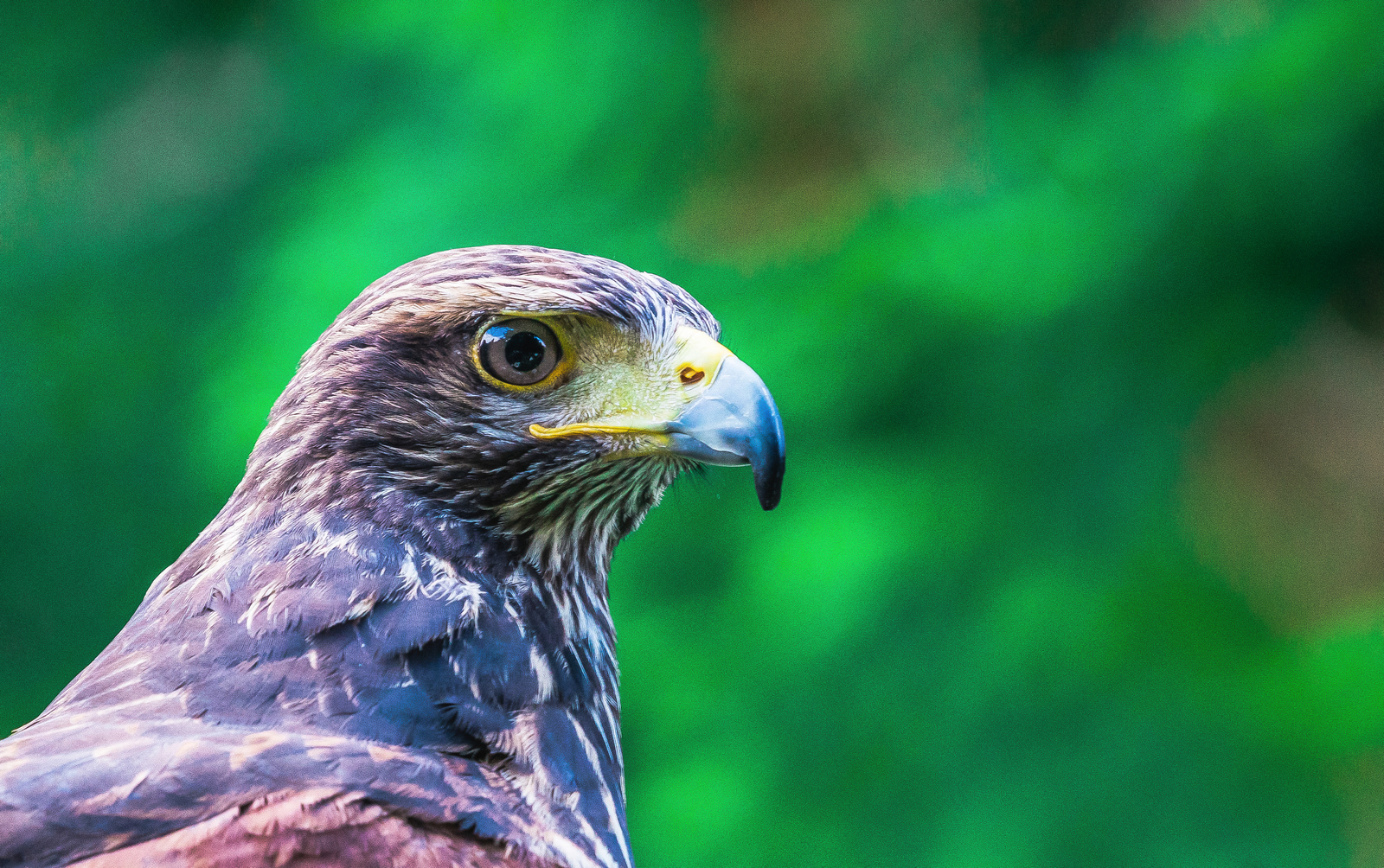
A Quick History of Falconry
Records show that falcons were used for hunting in China as far back as 2200 BC. They became a status symbol and were given as royal gifts.
Ancient Mesopotamian ruins show depictions of falconers holding hawks on their wrists, and Aristotle made references to the sport of falconry dating back to the 300s BC in Greece.
It is believed that Crusaders brought falconry to Western Europe, where it reached its height of popularity during the Medieval period.
Students from the University of Pennsylvania established the Peregrine Club in 1936. Thanks to the club’s influence, falconry grew in popularity in the United States, leading to the formation of the North American Falconer’s Association in 1961. The association is still very active today with thousands of members.
Nonprofits like The Peregrine Fund have made major contributions in restoring the peregrine falcon population after it was placed on the Endangered Species List in 1970. The peregrine falcon was removed from the list in 1999, and the population is now stable.
Falconeering Phrases in Everyday English
Throughout his plays, Shakespeare mentions falcons or falconry over 50 times! Thanks in large part to the famous playwright, many of the words and phrases associated with falconry made their way into the everyday English language. You probably recognize:
- Under your thumb Refers to tightly gripping the bird’s tethers to keep it under control.
- Wrapped around my little finger Falconers wrap the tethers around their pinky to prevent the bird from flying away.
- Eyes like a hawk Birds of prey are known for their incredible eyesight, which can be ten times stronger than the human eye.
- Fed up When a bird has eaten its fill, it will no longer hunt.
- Booze This term draws its roots from the word bouse, which meant to drink excessively. Again, a bird will refuse to hunt after drinking too much water.
- Haggard An untamed, wild hawk; the word came to mean disheveled or exhausted.
- Hoodwinked Falconers cover a bird’s eyes with a leather hood to prevent distraction until they are ready to begin hunting. Hoodwinked is now used as a verb to describe tricking someone.
- Rouse The term for a hawk shaking its feathers; beginning in the 16th century, it began to mean “awaken.”




